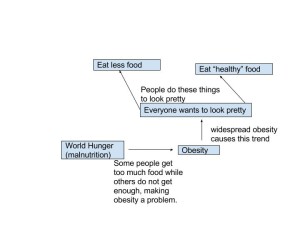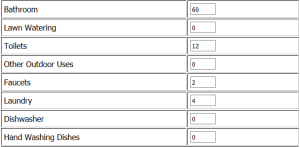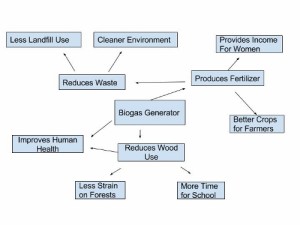Explain my knowledge of biodiversity and how that relates to this course.
Most of my experience with biodiversity is in the soil. I have taken soils 101 and have learned a large amount about soil microbes and how humans affect soil microbe populations. I find this topic really interesting, so I wanted to write about it. Obviously, using soils for agriculture decreases the microbial population in the soil. There several reasons for this. Elimination of the vast majority of soil niches created by the various plants within the ecosystem happens as soon as the land that will be used for farming is cleared. After this, plowing changes the makeup of the soil, mainly by destroying the soil structure and causing rapid degradation of organic matter in soil (humus), which holds the soil clumps (aggregates) together. Plowing causes the microbial populations to explode for a few days, then have a massive death event as the microbials run out of organic matter to obtain energy from. This results in a soil that has very few niches and a very small population of microbials to fill those niches.
Explain ways of preventing biodiversity loss in soil.
Easy ways of preventing biodiversity loss in soil that is being used for agriculture are crop rotations, cover crops, no plow or reduced plow methods, intercropping, terrace cropping, and many others. All of these methods increase the niches in the soil, which directly provides the soil with more “room” for microbials to use. Not plowing, intercropping, and terrace cropping can allow smaller grasses and plants that would typically be considered weeds (though they actually don’t negatively impact the production of the farm) to live within the crop, allowing permanent niches that greatly boost the amount of microbials. Cover crops and crop rotations help promote diverse nutrients in the soil, allowing more microbials to be sustained in the soil.
How does all of this apply to biodiversity in the world?
I think looking at the soil provides a smaller scale model of how the world’s diversity works. Humans building a city is analogous to plowing a field for a monoculture: it is virtually the worst thing we can do for the diversity in the area. Very few niches exist in a large city because (proportionally) very few non-human organisms exist. We can increase the biodiversity of the city by adding small islands of plants, similarly to using intercropping or putting grassy terraces into a farm. Also, by building up instead of out, we can make a city able to sustain more people without taking up as much of the land, also minimizing our impact on diversity. This is similar to increasing global diversity by growing crops more efficiently to eliminate how much land is used to grow crops.
Please comment some more ideas about how human activities are analogous to the soil diversity! I could use some help with developing this idea.
Thanks for reading — TJ Diaz



